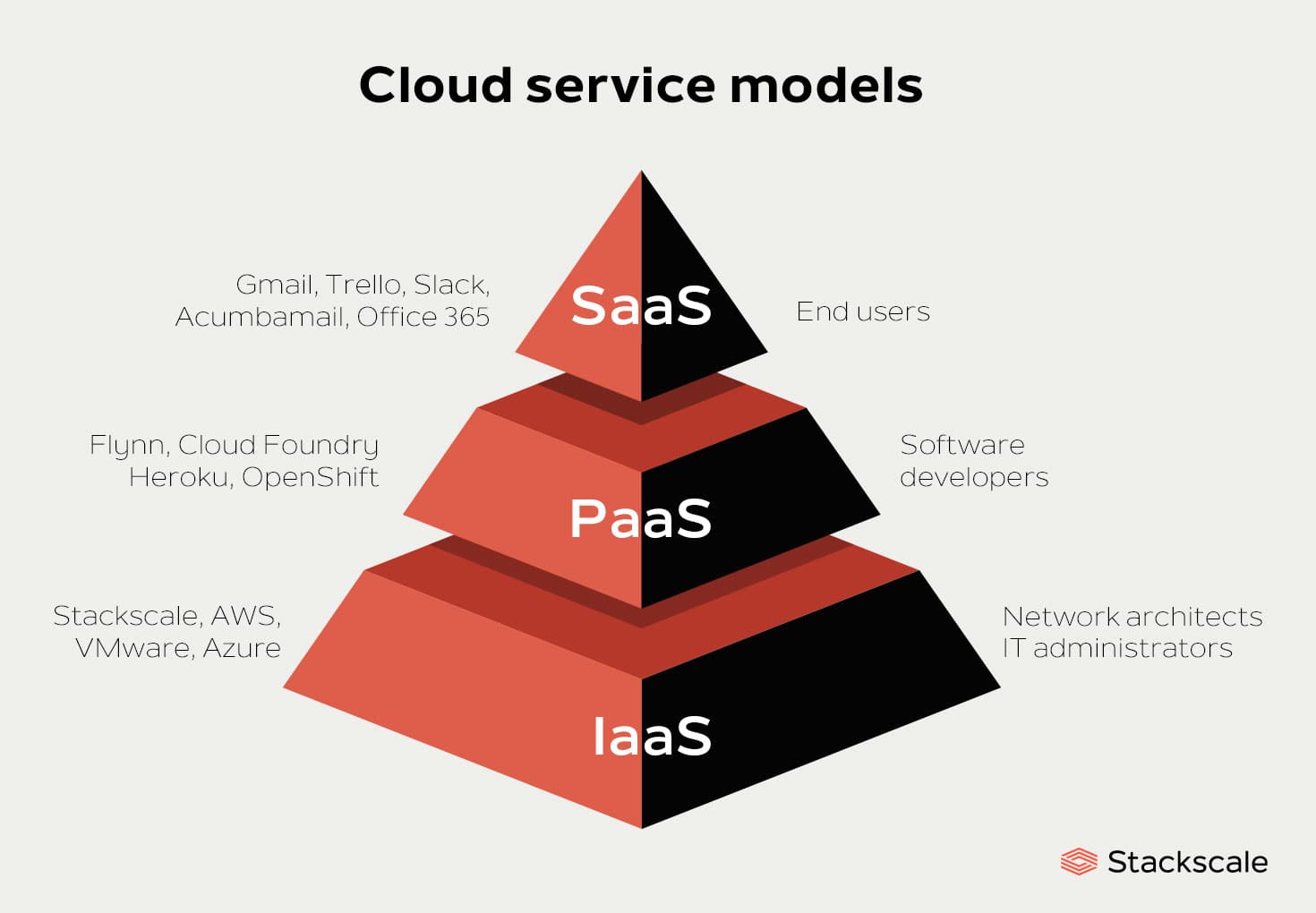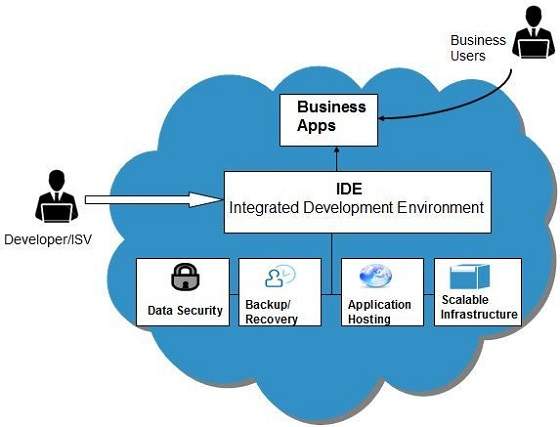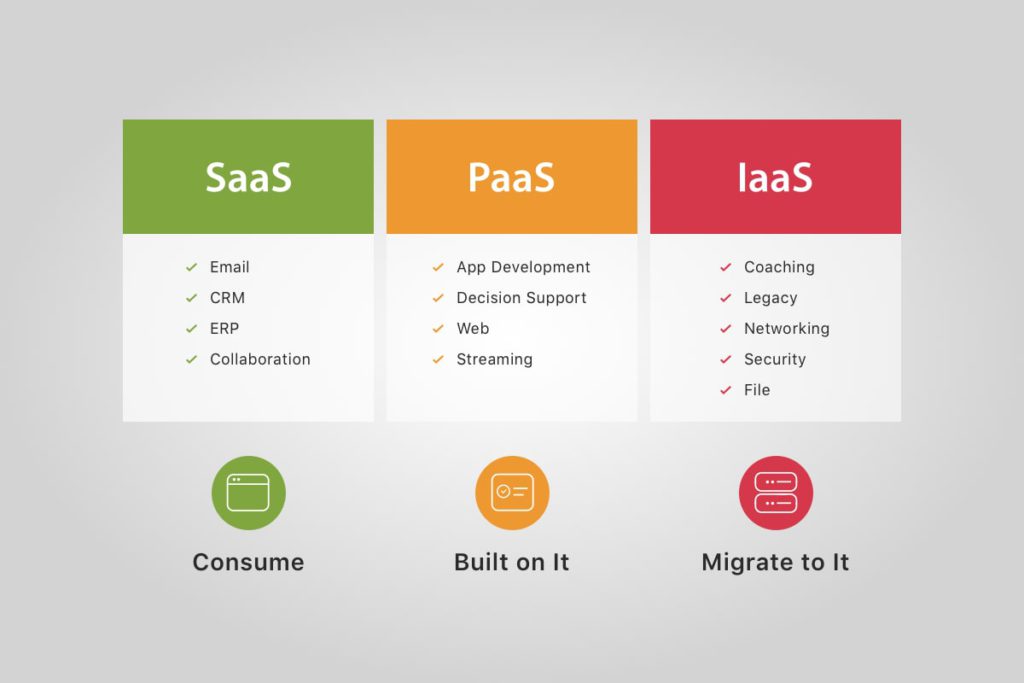What is PaaS and How Does it Function in the Cloud Environment?
Platform-as-a-Service (PaaS) is a cloud computing model that offers a platform for developers to build, test, and deploy applications without managing the underlying infrastructure. PaaS examples in the cloud include platforms such as Heroku, Google App Engine, and Microsoft Azure. These platforms provide a framework that simplifies the application development process, enabling developers to focus on creating innovative and functional applications.
In the cloud environment, PaaS functions as a middle ground between Infrastructure-as-a-Service (IaaS) and Software-as-a-Service (SaaS). IaaS provides raw computing resources, while SaaS offers ready-to-use software applications. PaaS, on the other hand, offers a balanced approach by providing a platform with tools, libraries, and infrastructure required for application development. This platform is managed and maintained by the PaaS provider, allowing developers to concentrate on creating applications tailored to their specific needs.
Key Benefits of PaaS in Cloud Computing
Platform-as-a-Service (PaaS) solutions in the cloud offer numerous advantages to businesses and developers. By abstracting the underlying infrastructure, PaaS enables developers to focus on creating applications without worrying about managing servers, storage, or networking. This section will discuss the primary benefits of PaaS in cloud computing, including scalability, cost savings, simplified maintenance, and faster time-to-market for applications.
Scalability
PaaS platforms provide automatic scaling capabilities, allowing applications to handle increased workloads seamlessly. As demand grows, PaaS environments can automatically allocate more resources to ensure smooth performance. This scalability is particularly beneficial for businesses experiencing fluctuating or unpredictable demand, as it eliminates the need for manual resource provisioning and deprovisioning.
Cost Savings
By utilizing PaaS solutions, businesses can reduce capital expenditures (CapEx) and operating expenses (OpEx) associated with purchasing and maintaining on-premises infrastructure. PaaS providers offer a pay-as-you-go pricing model, enabling businesses to pay only for the resources they consume. This flexibility can lead to significant cost savings, especially for small and medium-sized businesses (SMBs) or startups with limited budgets.
Simplified Maintenance
PaaS providers handle infrastructure maintenance, including patching, updating, and securing the underlying hardware and software. This frees up developers to focus on application development, testing, and deployment, rather than spending time on routine maintenance tasks. As a result, businesses can achieve higher productivity and faster time-to-market for their applications.
Faster Time-to-Market
PaaS platforms offer pre-built tools, libraries, and frameworks that can accelerate the application development process. Developers can leverage these resources to build, test, and deploy applications more quickly than if they had to create everything from scratch. Faster time-to-market can provide businesses with a competitive edge, enabling them to respond more rapidly to market changes and customer needs.
Selecting the Right PaaS Provider: A Comparative Analysis
When choosing a Platform-as-a-Service (PaaS) provider, businesses must consider various factors, including features, pricing, support, and customization options. This section will compare and contrast different PaaS providers, such as Heroku, Google App Engine, and Microsoft Azure, to help you make an informed decision.
Heroku
Heroku is a popular PaaS provider known for its ease of use and robust support for multiple programming languages, including Ruby, Python, Java, Node.js, and Go. Key features of Heroku include a user-friendly interface, add-on marketplace, and strong community support. Heroku offers a free tier, as well as pay-as-you-go and fixed-price plans. However, customization options may be limited compared to other PaaS providers.
Google App Engine
Google App Engine is a flexible and scalable PaaS solution that supports several programming languages, including Python, Java, Node.js, Go, and PHP. App Engine offers automatic scaling, robust security features, and seamless integration with other Google Cloud services. Pricing is based on resource usage, and Google provides a free tier for testing and development purposes. While App Engine offers extensive features, it may have a steeper learning curve compared to other PaaS providers.
Microsoft Azure
Microsoft Azure is a versatile PaaS provider that supports various programming languages, tools, and frameworks. Azure offers a wide range of services, including compute, storage, networking, and machine learning. Pricing is based on resource usage, and Azure provides a free tier for testing and development purposes. Azure offers extensive documentation, tutorials, and support resources, making it a suitable choice for businesses seeking a customizable and scalable PaaS solution.
Comparing PaaS Providers
Each PaaS provider has its strengths and weaknesses, and selecting the right one depends on your specific business needs and objectives. When comparing PaaS providers, consider the following:
- Supported programming languages and frameworks
- Ease of use and learning curve
- Scalability and performance
- Pricing and cost structure
- Integration with existing tools and services
- Security features and compliance requirements
- Customer support and community resources
Hands-On: How to Set Up a PaaS Environment in the Cloud
This section will guide you through setting up a Platform-as-a-Service (PaaS) environment in the cloud using Heroku, one of the popular PaaS providers mentioned earlier. By following these steps, you’ll learn how to create a new Heroku application, deploy a simple web app, and manage your new PaaS environment.
Step 1: Install Heroku CLI
Begin by installing the Heroku Command Line Interface (CLI) on your local machine. Visit the Heroku Dev Center to download and install the CLI for your operating system.
Step 2: Log In to Heroku
After installing the Heroku CLI, open your terminal or command prompt and log in to your Heroku account by typing heroku login and providing your Heroku credentials when prompted.
Step 3: Create a New Heroku App
Create a new Heroku application by typing heroku create your-app-name, replacing “your-app-name” with your desired application name. Heroku will generate a unique URL for your application, such as “your-app-name.herokuapp.com”.
Step 4: Prepare Your Application
Ensure your application meets Heroku’s deployment requirements. For this example, we’ll use a simple Node.js app. Create a new directory for your app, initialize a new Node.js project, and install any necessary dependencies.
Step 5: Deploy Your Application
Use the Heroku Git remote to deploy your application by typing git push heroku main (replace “main” with your Git branch name if needed). Heroku will automatically build and deploy your application.
Step 6: Manage Your Heroku App
Monitor your application’s performance, scale resources, and manage other aspects of your Heroku environment through the Heroku Dashboard or by using the Heroku CLI.
Setting up a PaaS environment in the cloud, like Heroku, simplifies application development, testing, and deployment. By following these steps, you’ve gained hands-on experience with a PaaS provider, giving you a better understanding of how to leverage these services for your cloud computing needs.
Real-World PaaS Examples: Success Stories and Best Practices
Platform-as-a-Service (PaaS) solutions have been adopted by businesses across various industries to streamline their cloud computing needs. This section highlights real-world PaaS examples, sharing success stories and best practices to help you make the most of PaaS in your organization.
Case Study 1: Netflix and AWS Elastic Beanstalk
Netflix, a leading media streaming service, leverages Amazon Web Services (AWS) Elastic Beanstalk, a fully managed PaaS solution, to handle its massive user base and content library. By using Elastic Beanstalk, Netflix benefits from automatic scaling, load balancing, and application health monitoring, ensuring seamless video streaming experiences for its customers.
Case Study 2: The New York Times and Google App Engine
The New York Times utilized Google App Engine to modernize its digital presence and streamline its content management system. By adopting App Engine, The New York Times achieved faster time-to-market for new features, simplified maintenance, and cost savings, enabling the company to focus on delivering high-quality journalism to its readers.
Best Practices for Implementing PaaS Solutions
- Define clear objectives and requirements before selecting a PaaS provider.
- Ensure seamless integration with existing systems and tools.
- Establish a robust security strategy, including data encryption, access control, and compliance management.
- Monitor and optimize resource utilization to minimize costs.
- Regularly review and update your PaaS environment to leverage new features and improvements.
By learning from these real-world PaaS examples and following best practices, businesses can successfully leverage PaaS solutions to enhance their cloud computing capabilities and achieve their strategic objectives.
Security Considerations for PaaS in Cloud Computing
As organizations increasingly adopt Platform-as-a-Service (PaaS) solutions in cloud computing, security remains a top concern. To ensure data privacy, access control, and compliance requirements are met, it’s essential to consider several security aspects when implementing PaaS environments. This section will address security concerns related to PaaS in cloud computing and provide recommendations for safeguarding PaaS environments, thus contributing to the broader understanding of paas examples cloud.
One critical security consideration for PaaS is data privacy. PaaS providers must implement robust data encryption methods, both at rest and in transit, to protect sensitive information. Additionally, data localization regulations may require specific geographical data storage, necessitating clear communication and adherence from PaaS providers.
Access control is another crucial security aspect for PaaS environments. Implementing strong authentication mechanisms, such as multi-factor authentication (MFA), helps prevent unauthorized access. Role-Based Access Control (RBAC) and Identity and Access Management (IAM) solutions further ensure that users only access the resources necessary for their job functions.
Regarding compliance requirements, PaaS providers should offer tools and features that help organizations meet industry-specific regulations, such as the Health Insurance Portability and Accountability Act (HIPAA) for healthcare organizations or the General Data Protection Regulation (GDPR) for businesses operating in the European Union.
To safeguard PaaS environments, consider the following best practices:
- Regularly review and update security policies and procedures.
- Implement a robust monitoring system to detect and respond to security threats promptly.
- Conduct regular security audits and vulnerability assessments.
- Establish a clear incident response plan and ensure all relevant stakeholders are trained and familiar with the process.
By carefully considering security aspects and implementing best practices, organizations can leverage PaaS solutions in cloud computing with confidence, ensuring data privacy, access control, and compliance requirements are met.
The Future of PaaS: Trends and Predictions
Platform-as-a-Service (PaaS) solutions in cloud computing continue to evolve, offering organizations new possibilities and opportunities. This section will explore emerging trends and future predictions for PaaS, focusing on the growth of serverless architectures, increased adoption of artificial intelligence, and the evolution of edge computing. Understanding these developments contributes to a broader understanding of paas examples cloud.
Serverless architectures are becoming increasingly popular in the PaaS landscape. This model allows developers to build and deploy applications without worrying about infrastructure management, as the cloud provider automatically manages the allocation of resources. As a result, serverless architectures offer greater scalability, reduced costs, and faster time-to-market for applications.
Artificial intelligence (AI) and machine learning (ML) technologies are also making their way into PaaS solutions. AI-powered tools can help automate various aspects of application development, testing, and deployment, enabling developers to focus on more strategic tasks. Moreover, PaaS environments can provide pre-built AI and ML models as services, allowing organizations to leverage advanced analytics capabilities without investing in expensive hardware or specialized skills.
Edge computing is another area where PaaS solutions are expected to play a significant role in the future. By processing data closer to the source, edge computing reduces latency, improves bandwidth efficiency, and enhances security. PaaS providers can offer edge computing services, allowing organizations to develop, deploy, and manage applications seamlessly across distributed infrastructure.
In conclusion, the future of PaaS in cloud computing looks promising, with trends such as serverless architectures, AI, and edge computing driving innovation and growth. By staying informed about these developments, organizations can make more informed decisions regarding PaaS solutions and harness their potential to drive business success.
Conclusion: Making an Informed Decision on PaaS Solutions in the Cloud
Throughout this article, we have explored various aspects of Platform-as-a-Service (PaaS) solutions in cloud computing, including their definition, key benefits, and future trends. By understanding paas examples cloud, organizations can make more informed decisions regarding their cloud computing strategies and harness the potential of PaaS to drive business success.
When selecting a PaaS provider, it’s crucial to evaluate factors like features, pricing, support, and customization options. Carefully considering these aspects ensures that the chosen PaaS solution aligns with the organization’s specific needs and objectives. Examples of PaaS providers include Heroku, Google App Engine, and Microsoft Azure, each offering unique strengths and capabilities.
Additionally, setting up a PaaS environment in the cloud requires careful planning and execution. By following a step-by-step guide, organizations can ensure a smooth and successful deployment, ultimately leading to increased scalability, cost savings, and faster time-to-market for applications.
Real-world PaaS examples demonstrate the potential benefits of these solutions. By studying success stories and best practices, organizations can learn from the experiences of others and optimize their PaaS implementations.
Security is another critical aspect of PaaS in cloud computing. Addressing concerns related to data privacy, access control, and compliance requirements is essential to ensure a secure and reliable PaaS environment.
Finally, staying informed about emerging trends and future predictions for PaaS, such as the growth of serverless architectures, increased adoption of artificial intelligence, and the evolution of edge computing, can help organizations make more strategic decisions regarding their PaaS solutions.
In summary, carefully evaluating PaaS providers based on specific business needs and objectives is crucial for organizations looking to leverage the benefits of cloud computing. By understanding the role of PaaS, its advantages, and future trends, businesses can make informed decisions and harness the power of PaaS to drive growth and innovation.







